Do you have a question about the Cessna Skylane 182T and is the answer not in the manual?
Overview of Section 1 content, covering general data and terminology.
Provides detailed information about the aircraft's engine, propeller, fuel, and oil.
Explains common terms, symbols, and abbreviations used in the manual.
Provides tables for converting between kilograms and pounds.
Introduces Section 2, covering limitations, instrument markings, and placards.
Details critical airspeed limitations and their operational significance.
Outlines operational limits for the engine and propeller.
Specifies maximum allowable weights for ramp, takeoff, landing, and baggage.
Defines the forward and aft center of gravity ranges for safe operation.
Lists approved flight operations and prohibited conditions like icing.
Displays required information on various placards for safe operation.
Provides guidance on coping with emergencies and maintaining aircraft control.
Details procedures for engine failure during takeoff, immediately after, and during flight.
Outlines procedures for landing without engine power and with engine power.
Covers procedures for engine fires in flight, electrical fires, and cabin fires.
Details procedures for handling inadvertent icing encounters during flight.
Provides guidance for landing with a flat main tire or nose tire.
Addresses high and low voltage indications and related corrective actions.
Describes procedures for dealing with Red X indications on airspeed and altitude displays.
Outlines actions to take when autopilot or electric trim systems fail.
Introduces Section 4, covering normal operations with standard equipment.
Lists recommended airspeeds for various phases of normal flight.
Details the step-by-step visual inspection of the aircraft before flight.
Provides procedures for starting the engine using both battery and external power.
Outlines the checklist items to be performed before initiating takeoff.
Details procedures for normal and short field takeoffs.
Describes procedures for normal and maximum performance climbs.
Outlines procedures for maintaining normal cruise flight.
Details procedures for normal, short field, and crosswind landings.
Provides special considerations for operating the aircraft in cold temperatures.
Offers guidance for operating the aircraft in hot weather conditions.
Introduces Section 5, explaining how to use performance data charts.
Demonstrates how to use charts for predicting flight performance.
Provides takeoff distance data based on various conditions.
Presents cruise performance data for different altitudes and power settings.
Details methods for estimating total fuel requirements for a flight.
Provides landing distance information for short field technique.
Shows airspeed corrections for normal and alternate static sources.
Lists stall speeds at maximum weight for different flap settings and C.G. conditions.
Provides takeoff distances for various conditions at different weights.
Details climb rates at different altitudes and temperatures.
Provides data for estimating time, fuel, and distance during climbs.
Presents cruise performance data at various altitudes and conditions.
Illustrates the relationship between power settings, altitude, and range.
Shows the relationship between power settings, altitude, and endurance.
Explains establishing basic empty weight and moment.
Details the step-by-step process for weighing the aircraft.
Demonstrates how to calculate weight and balance for a typical flight loading.
Graphical tool for determining moments/1000 for various items.
Graphical representation of allowable weight and moment limits.
Specifies the allowable forward and aft C.G. locations.
Lists available Cessna equipment with weight and arm data.
Introduces Section 7, describing airplane systems and optional equipment.
Describes the structural construction of the airplane's airframe.
Explains the operation of the airplane's control surfaces.
Details the layout and components of the instrument panel.
Describes the function and display of primary flight instruments.
Provides information on the engine's type, rating, and accessories.
Details the airplane's fuel system components and operation.
Explains the airplane's electrical system, buses, and power sources.
Covers the operation of exterior and interior lighting systems.
Describes the cabin climate control system and its operation.
Explains the pitot-static system and its connected instruments.
Details the vacuum system and its instruments, if installed.
Describes the integrated G1000 avionics system and its components.
Covers the operation of the autopilot system.
Supplement detailing the WX-500 Stormscope weather radar.
Supplement detailing the Garmin GTS 800 Traffic Advisory System.
Provides factory recommended procedures for handling and servicing the airplane.
Outlines FAA required and Cessna inspection programs.
Covers procedures for towing, parking, tiedown, and jacking the airplane.
Details servicing requirements, including oil and fluid checks.
Covers approved fuel grades, capacity, additives, and contamination.
Explains the purpose of supplements for special operations and equipment.
Lists FAA-approved supplements and their revision status.
Details the installation and operation of the Artex ME406 ELT.
Covers the operation and limitations of the WX-500 Stormscope.
Details the operation and procedures for the KR87 ADF.
Overview of Section 1 content, covering general data and terminology.
Provides detailed information about the aircraft's engine, propeller, fuel, and oil.
Explains common terms, symbols, and abbreviations used in the manual.
Provides tables for converting between kilograms and pounds.
Introduces Section 2, covering limitations, instrument markings, and placards.
Details critical airspeed limitations and their operational significance.
Outlines operational limits for the engine and propeller.
Specifies maximum allowable weights for ramp, takeoff, landing, and baggage.
Defines the forward and aft center of gravity ranges for safe operation.
Lists approved flight operations and prohibited conditions like icing.
Displays required information on various placards for safe operation.
Provides guidance on coping with emergencies and maintaining aircraft control.
Details procedures for engine failure during takeoff, immediately after, and during flight.
Outlines procedures for landing without engine power and with engine power.
Covers procedures for engine fires in flight, electrical fires, and cabin fires.
Details procedures for handling inadvertent icing encounters during flight.
Provides guidance for landing with a flat main tire or nose tire.
Addresses high and low voltage indications and related corrective actions.
Describes procedures for dealing with Red X indications on airspeed and altitude displays.
Outlines actions to take when autopilot or electric trim systems fail.
Introduces Section 4, covering normal operations with standard equipment.
Lists recommended airspeeds for various phases of normal flight.
Details the step-by-step visual inspection of the aircraft before flight.
Provides procedures for starting the engine using both battery and external power.
Outlines the checklist items to be performed before initiating takeoff.
Details procedures for normal and short field takeoffs.
Describes procedures for normal and maximum performance climbs.
Outlines procedures for maintaining normal cruise flight.
Details procedures for normal, short field, and crosswind landings.
Provides special considerations for operating the aircraft in cold temperatures.
Offers guidance for operating the aircraft in hot weather conditions.
Introduces Section 5, explaining how to use performance data charts.
Demonstrates how to use charts for predicting flight performance.
Provides takeoff distance data based on various conditions.
Presents cruise performance data for different altitudes and power settings.
Details methods for estimating total fuel requirements for a flight.
Provides landing distance information for short field technique.
Shows airspeed corrections for normal and alternate static sources.
Lists stall speeds at maximum weight for different flap settings and C.G. conditions.
Provides takeoff distances for various conditions at different weights.
Details climb rates at different altitudes and temperatures.
Provides data for estimating time, fuel, and distance during climbs.
Presents cruise performance data at various altitudes and conditions.
Illustrates the relationship between power settings, altitude, and range.
Shows the relationship between power settings, altitude, and endurance.
Explains establishing basic empty weight and moment.
Details the step-by-step process for weighing the aircraft.
Demonstrates how to calculate weight and balance for a typical flight loading.
Graphical tool for determining moments/1000 for various items.
Graphical representation of allowable weight and moment limits.
Specifies the allowable forward and aft C.G. locations.
Lists available Cessna equipment with weight and arm data.
Introduces Section 7, describing airplane systems and optional equipment.
Describes the structural construction of the airplane's airframe.
Explains the operation of the airplane's control surfaces.
Details the layout and components of the instrument panel.
Describes the function and display of primary flight instruments.
Provides information on the engine's type, rating, and accessories.
Details the airplane's fuel system components and operation.
Explains the airplane's electrical system, buses, and power sources.
Covers the operation of exterior and interior lighting systems.
Describes the cabin climate control system and its operation.
Explains the pitot-static system and its connected instruments.
Details the vacuum system and its instruments, if installed.
Describes the integrated G1000 avionics system and its components.
Covers the operation of the autopilot system.
Supplement detailing the WX-500 Stormscope weather radar.
Supplement detailing the Garmin GTS 800 Traffic Advisory System.
Provides factory recommended procedures for handling and servicing the airplane.
Outlines FAA required and Cessna inspection programs.
Covers procedures for towing, parking, tiedown, and jacking the airplane.
Details servicing requirements, including oil and fluid checks.
Covers approved fuel grades, capacity, additives, and contamination.
Explains the purpose of supplements for special operations and equipment.
Lists FAA-approved supplements and their revision status.
Details the installation and operation of the Artex ME406 ELT.
Covers the operation and limitations of the WX-500 Stormscope.
Details the operation and procedures for the KR87 ADF.
| Manufacturer | Cessna |
|---|---|
| Model | Skylane 182T |
| Type | Single-engine piston |
| Engine | Lycoming IO-540-AB1A5 |
| Horsepower | 230 hp |
| Maximum Takeoff Weight | 3, 100 lb (1, 406 kg) |
| Wingspan | 36 ft (11.0 m) |
| Length | 29 ft (8.8 m) |
| Seating Capacity | 4 |
| Category | Aircraft |
| Maximum Speed | 148 knots |
| Stall Speed (with flaps) | 49 knots |
| Rate of Climb | 924 feet per minute |
| Empty Weight | 1, 970 pounds |
| Fuel Capacity | 87 gallons |
| Height | 9 feet 4 inches |
| Maximum Cruise Speed | 145 knots |
| Service Ceiling | 18, 100 feet |
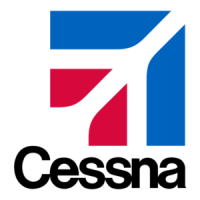
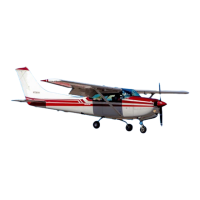
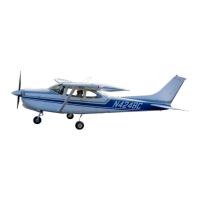

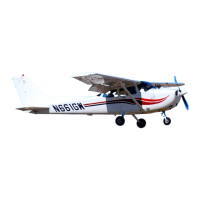
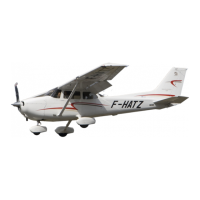
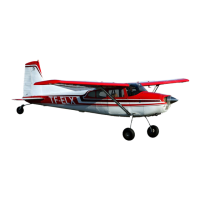


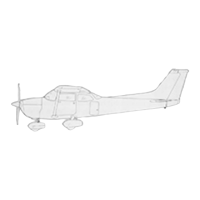
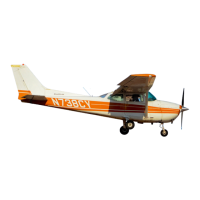

